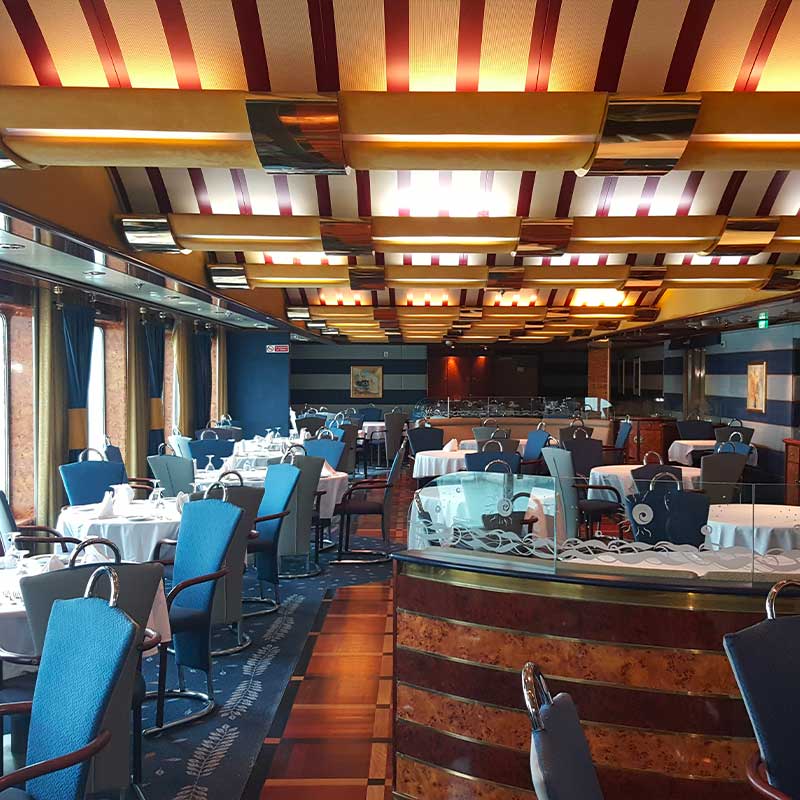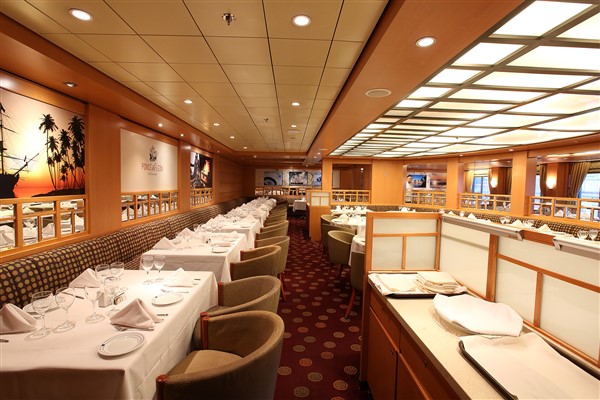A term of Dutch origin, kabuis, indicates the ship’s galley, and in the nautical lexicon, it is the space used inside ships to store, preserve, and prepare food. The term also refers to foodstuffs themselves and preparation. Therefore to the galley on board, with its various refrigeration and cooking facilities.

We have always been fascinated by the “galley” on boat trips. Now that we often travel by sea on cruiser-style ships, our fascination has turned into a curiosity to understand the organisations and structures behind this world of onboard kitchens. Also, because, let’s face it, we are Italians.

Like good food lovers, one of the things that are given more importance in travel and accommodation is the culinary part. Nowadays, large cruise ships are ready to satisfy every need and particular taste, with veg, gluten-free or dedicated dishes for the most demanding palates. Gastronomic proposals are increasingly becoming gourmet experiences, even on short journeys from one port to another.

The staff employed in the onboard kitchens is increasingly qualified. The chef’s choice is important, and people are sought who are sometimes prominent, but in any case have excellent professional and organisational skills. Raw materials are ordered from time to time and taken on board at the first helpful port and then placed in galleys whose size varies from ship to ship but whose characteristics must, in any case, comply with precise safety standards.

Current regulations impose strict controls on the number of individual ingredients and mechanisms to ensure high-quality standards to avoid any possible contamination by microbes and external agents. The difficulty is enormous: it is necessary to manage such a complicated assembly line, respecting all the individual factors, from the quality of the food to preserving the raw materials, from the storage of individual foods to the organisation into dedicated preparation areas.

But who makes the menus? Who decides what and when to serve the guests? How and how often are purchases made? Each company has its ground division that thinks up, rehearses and manages the menus. For example, one of these is Grimaldi, with whom we had the opportunity to test the services onboard, the kitchens and menus available, and hear about their management and supply policy. We replenish our ships every week through our warehouses for about 80 % of the products, fruit and vegetables, dairy products, and over-the-counter crisps. We rely on carefully selected local suppliers, and the ships are supplied to all ports of call according to the ship’s needs and logistics.

The meals to be prepared each day, and in the individual parts of the day, have four-figure numbers, and therefore, as we have seen, require a great deal of organisation. Specifically, the meals provided to both passengers and crew are packed on board from the raw materials. For example, 99% of the bread is baked on board, and the 1% that is “jarring” is just a small purchase of frozen bread to cope with emergencies.

Both fresh and frozen fish are served on board, while the fruit is only and exclusively fresh, with a supply usually twice a week consistently to guarantee a fresh and genuine product. Desserts and leavened products are partly prepared on board and partially purchased from leading suppliers to ensure quality and standardise the various units. As we were saying, in all this work, there has to be perfect organisation, a top-notch brigade!

The kitchens are divided into two units: one headed by a chef for the passengers and one led by a chef for the crew. The chefs organise their work in batches, entrusting the batch leaders with the kitchen management. Usually, the kitchen is divided into a cold food area and a hot food area, and each batch manager has assistants to carry out the work. The galley master manages food storage in cooperation with the Food & Beverage Manager, who is more commonly referred to as the “house master” in maritime jargon.

The brigades’ skill is undisputed, not least because of the experience we’ve had on board, both at a restaurant and self-service level. However, when dealing with something as structured as this, with a considerable number of meals to be delivered or already delivered, you’re touching another important, even fundamental point: waste management. Grimaldi’s company policy is to reduce them to the limit, with careful management, an analytical examination of food preferences, to prepare the right quantities to be dispensed, both to avoid waste and always guarantee passengers and crew fresh and tasty food. A fundamental role in this no-waste policy is played by using machinery and cooking techniques such as vacuum cooking, which guarantees the correct division of food, an excellent, if not the best, method of preservation.

And finally, there is a high level of attention in the final stages of serving so as not to prepare portions of food that will then remain unused, preferring express preparation in these final stages. Many other issues onboard receive dedicated attention, from the management of water used for washing, cabins, showers and toilets, and then thrown back into the sea after passing through the purifiers, to waste management.

Certainly, the next time we sit down at a table in a restaurant on the ship or taste any food on board, we will do so with a different, more conscious thought. We will think about everything behind a single dish: how the food arrives on board and how it is cooked and presented. We will travel more knowledgeable about the work and economy behind an activity similar to the classic restaurant and hotel business but so different in terms of numbers and logistics.

Article edit by Nadia Toppino
Food, Wine & Hospitality Consultant

